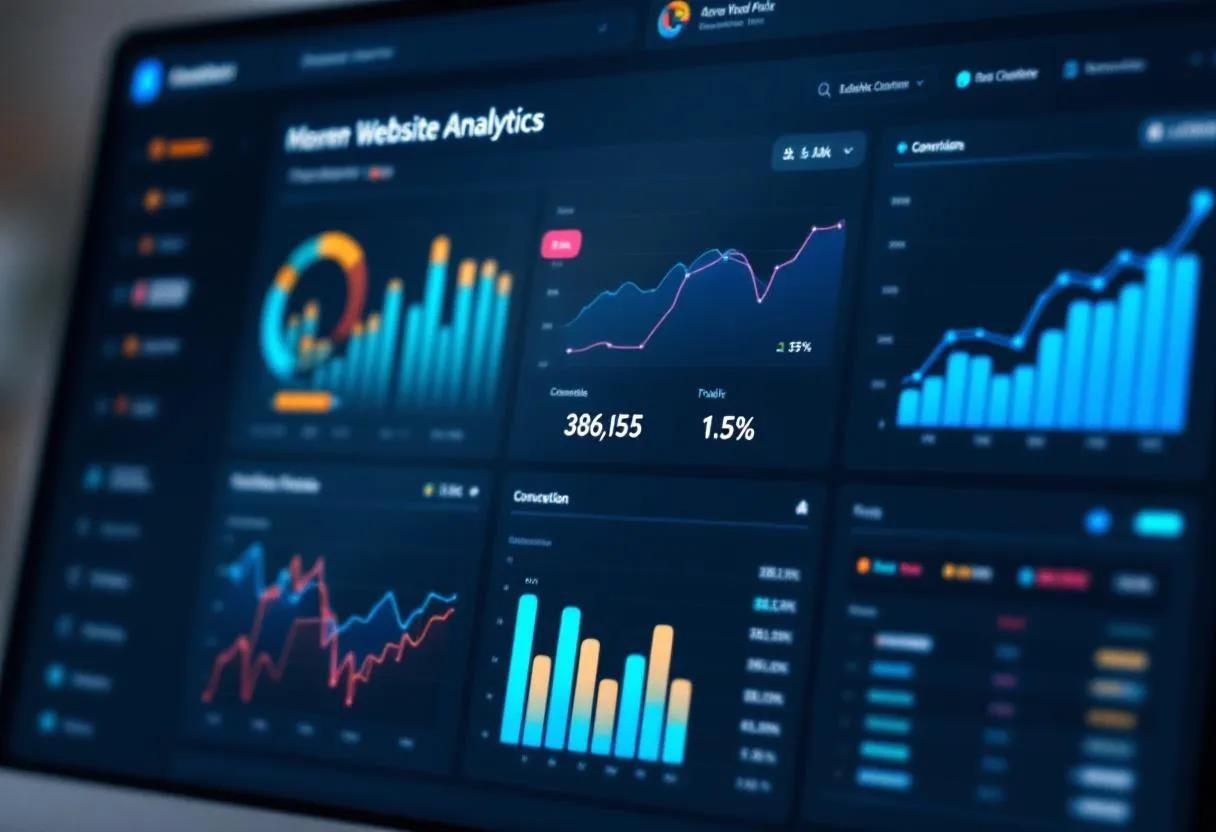The Importance of Website Analytics: Understanding Your Audience

Let’s face it: just having a website these days isn’t enough. You need to understand what’s going on behind the scenes. I’m talking about knowing who’s visiting, what they’re doing, and, most importantly, why. That’s where website analytics comes into play. Forget those vanity metrics like simple page views. We’re after actionable insights that can seriously boost your business.
Think of your website like a real-world store. You wouldn’t just unlock the doors and hope for the best, right? Of course not! You’d keep tabs on which aisles are popular, which products are flying off the shelves, and how customers are interacting with your displays. Website analytics? It’s like that, but for your online world.
So, What Is Website Analytics, Really?
It’s all about gathering, dissecting, and reporting data related to your website’s traffic and how users behave. You can track key performance indicators (KPIs), get a grip on user demographics, spot popular content, and gauge how well your marketing campaigns are doing. Bottom line? It’s your key to understanding your audience.
Website analytics helps you answer the big questions:
* Who are these people visiting my site? (Demographics, interests, location – the works!)
* How are they finding me? (Search engines, social media, referrals?)
What are they doing* when they get here? (Which pages are they hitting? How long are they sticking around? What actions are they taking?)
* What’s the hottest content on my site?
* What’s my conversion rate? (Are people filling out forms? Buying stuff?)
* Where are people dropping off during the conversion process?
Why Should You Care About Audience Behavior?
Simple. Understanding how people interact with your site is huge. It lets you:
Make Your Site a Joy to Use (Improve UX)

Spot things that are confusing or annoying. See what’s not working. Then, fix it! Data-driven improvements to your user experience lead to happier visitors and better engagement. See a high bounce rate on a page? Maybe the content’s irrelevant, the page is slow, or the call-to-action is weak.
Craft Content That Actually Resonates
Analytics will show you what content your audience devours. Track page views, time on page, social shares – all that good stuff. Then, use that info to shape your content strategy. Blog posts crushing it? Videos falling flat? Listicles getting more love than deep dives? The data tells the tale.
Seriously Boost Conversions
Let’s be real: most sites are trying to get people to do something – generate leads, make sales, whatever. Analytics helps you find the snags in your conversion process and smooth them out. High abandonment rate on your checkout page? Maybe simplify the process, add payment options, or clarify shipping info. Small tweaks, powered by data, can make a massive difference.
Supercharge Your SEO
More traffic from search engines = more eyeballs on your site. Analytics reveals how your SEO is performing – keyword rankings, organic traffic, bounce rate from search referrals, etc. Use this to tweak your SEO strategy. Optimize for the right keywords. Speed up your site. Build those backlinks.
Fine-Tune Your Marketing Campaigns
Are your marketing efforts paying off? Analytics will tell you. Track traffic sources, conversion rates, ROI – see what’s working and what’s not. Social media ad campaign? Track the visitors it sends and how many turn into customers. Optimize your ad spend and focus on the channels that deliver.
Getting Started with Website Analytics: A Quick Guide
Don’t sweat it. Setting up analytics isn’t rocket science.
1. Pick Your Weapon (Analytics Tool): Google Analytics is the big dog – popular, powerful, and free. Alternatives? Adobe Analytics, Matomo, Mixpanel.
2. Plant the Tracking Code: Once you’ve chosen your tool, you’ll need to add a tracking code to your website. This little snippet collects data on traffic and user behavior. Google Analytics gives you a simple JavaScript code to paste into your website’s header.
3. Define Your KPIs: What metrics matter most to your business? Website traffic? Bounce rate? Conversion rate? Average order value? Customer lifetime value? Nail these down.
4. Set Up Goals and Events: Goals are actions you want users to take (submit a form, buy something). Events are specific interactions you want to track (clicking a button, watching a video). Setting these up lets you measure how well your website is achieving its objectives.
5. Dive into the Data: Regularly check your analytics for trends, patterns, and areas to improve. See opportunities to tweak your website, content, and marketing based on what you’re seeing.
6. Rinse and Repeat: Analytics isn’t a “set it and forget it” thing. It’s a constant process of monitoring, analyzing, and adapting to keep up with your audience and the market.
Beyond the Basics: Level Up Your Analytics Game
Ready to go deeper? Explore these advanced techniques:
* Audience Segmentation: Divide your audience into groups based on demographics, behavior, etc. – and tailor your approach to each group.
* A/B Testing: Try out different versions of your website, content, or marketing campaigns to see what performs best.
* Attribution Modeling: Figure out which marketing channels are contributing the most to your conversions.
* Customer Journey Analysis: Track the path users take on your website from their first visit to their final conversion.
The Takeaway: Data-Driven Decisions = Business Growth
Website analytics is crucial for any business that wants to thrive online. By understanding your audience, optimizing your website, and refining your marketing based on data, you can boost user experience, increase conversions, and fuel sustainable growth. Don’t guess what your audience wants – use analytics to know for sure.
So, jump into your data, discover the insights, and start making data-driven decisions that will transform your online presence.
Frequently Asked Questions (FAQ)
What’s a “Good” Bounce Rate?
Generally, aim for 26% to 40%. But it depends on your website type. Blogs often have higher bounce rates than e-commerce sites.
How Often Should I Check My Analytics?
At least once a week. For critical periods like marketing campaigns, check daily.
Is Google Analytics GDPR Compliant?
Yes, if you set it up correctly. Anonymize IP addresses and get clear consent from users.
What Are Some Alternatives to Google Analytics?
Adobe Analytics, Matomo, Mixpanel, and Fathom Analytics are popular choices, each with different features and pricing.
How Can I Speed Up My Website’s Loading Time?
Optimize images, use browser caching, minify CSS and JavaScript, and use a content delivery network (CDN).



